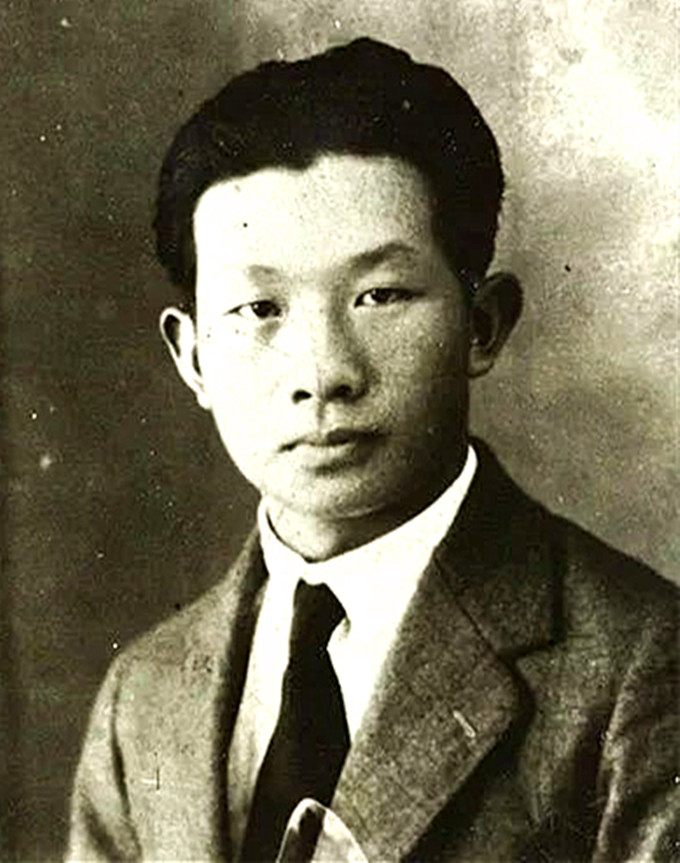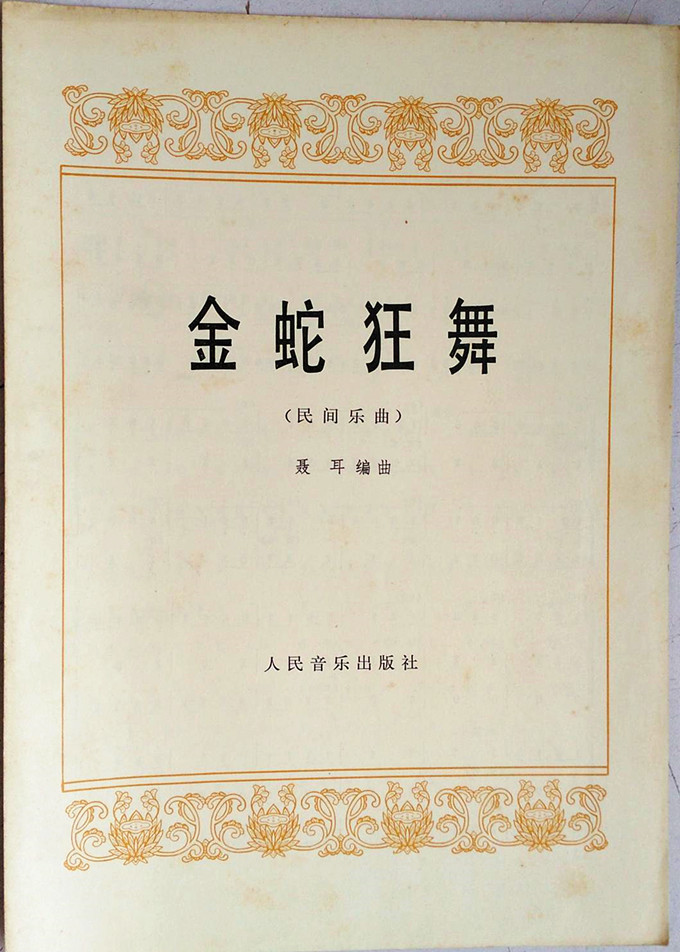|
||||||||||||||||||||||||||
 |
 |
|||||||||||||||||||||||||
|
|

|
|||||||||||||||||||||||
|
|
|
||||||||||||||||||||||
| 聂耳(Nie Er 1912~1935) | |||||||||||||||||||||||
中华人民共和国国歌 |
|||||||||||||||||||||||
| 《义勇军进行曲》是由田汉作词,聂耳作曲的歌曲,是电影《风云儿女》的主题歌,被称为中华民族解放的号角,自1935年在民族危亡的关头诞生以来,对激励中国人民的爱国主义精神起了巨大的作用,后成为中华人民共和国国歌。 | |||||||||||||||||||||||
|
|
|||||||||||||||||||||||
| 《金蛇狂舞》聂耳编曲 徐景新改编 指挥/胡炳旭 | |||||||||||||||||||||||
|
|
|||||||||||||||||||||||
|
音乐历史上的今天 1912年2月14日,(农历辛亥年腊月廿七),聂耳出生于云南省昆明市甬道街73号“成春堂”药店的楼上。
聂耳(1912年2月14日~1935年7月17日),云南玉溪人,生于昆明,原名聂守信,字子义(亦作紫艺),中国音乐家,中华人民共和国国歌《义勇军进行曲》的作曲者,曾用笔名有黑天使、噪森、浣玉、王达平等。
1912年2月,聂耳出生于云南省昆明市。1927年考入云南省立第一师范学校。1928年加入中国共产主义青年团。1930年到上海,参加反帝大同盟。1933年初,聂耳由田汉介绍加入中国共产党。1935年7月17日,聂耳在日本神奈川县藤泽市鹄沼海滨游泳时,不幸溺水身亡,年仅23岁。
聂耳创作了数十首革命歌曲,他的一系列作品影响中国音乐几十年。他的音乐创作具有鲜明的时代感、严肃的思想性、高昂的民族精神和卓越的艺术创造性,为中国无产阶级革命音乐的发展指出了方向,树立了中国音乐创作的榜样
。
今日视频:1、聂耳作曲田汉作词的《中华人民共和国国歌 》。2、聂耳编曲的民乐合奏《金蛇狂舞》徐景新改编 指挥/胡炳旭 。 |
|
||||||||||||||||||||||
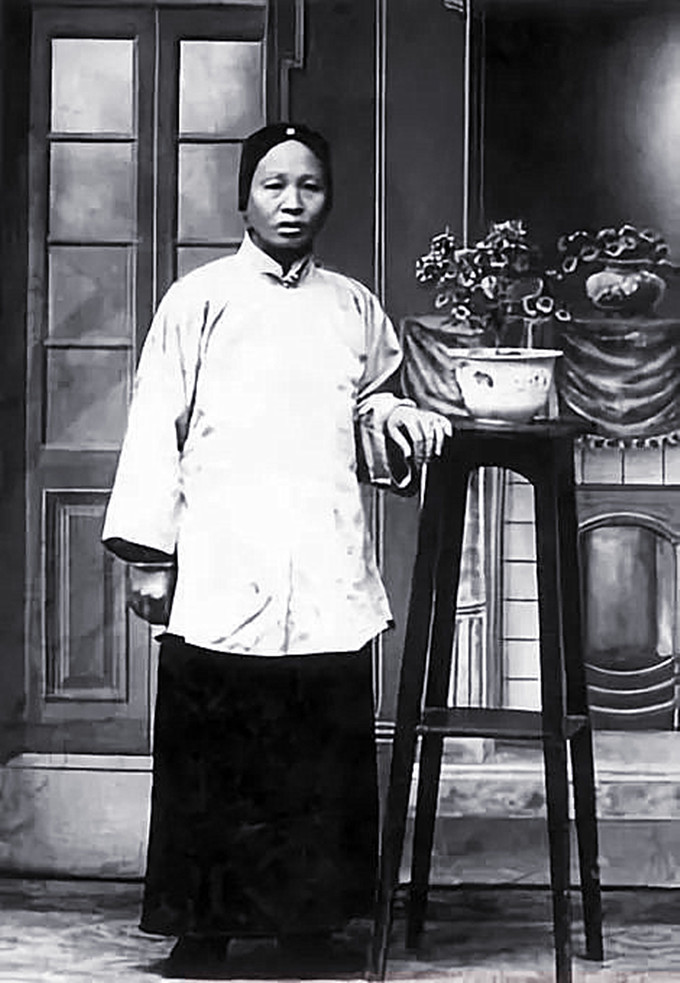 |
|||||||||||||||||||||||
| 聂耳四岁的时候,他的父亲聂鸿仪就因病去世,家庭的重担由他母亲彭寂宽独立扛起。她不仅是一位医术高明且知书达理的中医,更是聂耳的音乐启蒙老师。彭寂宽非常重视对子女的教育,尽管家庭不宽裕,但还是想方设法让三个儿子上学,同时言传身教,教子女许多为人处世的道理,她常对子女们说:“这个家,这个窝,虽然说没有金子、银子,但是要有骨气、志气。” | |||||||||||||||||||||||
| When Nie Er was four years old, his father, Nie Hongyi, died of illness, leaving his mother Peng Jikuan to carry the burden of the family on her own. She is not only a skillful and well-informed traditional Chinese medicine, but also Nie Er's first music teacher. Peng Jikuan attached great importance to the education of her children. Although the family was not well off, she still tried to let her three sons go to school. At the same time, she taught her children a lot of principles about how to behave in the world. | |||||||||||||||||||||||
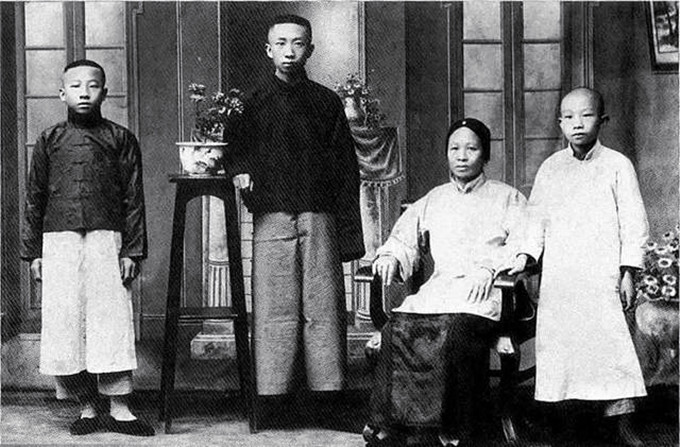 |
|||||||||||||||||||||||
| 聂耳和母亲及家人合影 | |||||||||||||||||||||||
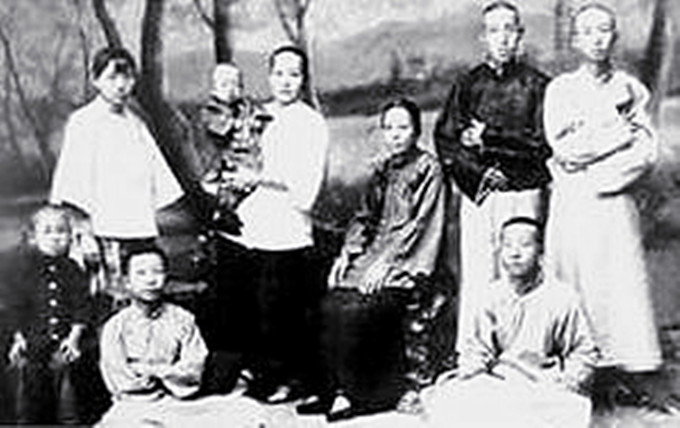 |
|||||||||||||||||||||||
| 聂耳13岁的时候全家合影 | |||||||||||||||||||||||
|
Today in music
history Nie Er was born on February 14, 1912 (the 27th day of the 12th month of the year of xinhai in the lunar calendar), above the drugstore "chengchuntang", no. 73, yongdao street, kunming city, yunnan province. Nie Er (February 14, 1912 ~ July 17, 1935), a native of yuxi, yunnan province, was born in kunming. His real name was nie shouxin. Nie er was born in kunming, yunnan province, in February 1912.In 1927, he was admitted to the first normal school of yunnan province.He joined the communist youth league of China in 1928.In 1930, he went to Shanghai and joined the anti-imperialist league.In early 1933, nie er was introduced to the communist party of China by tian han.On July 17, 1935, nie er drowned at the age of 23 while swimming on the beach of oboboten in fujisawa city, kanagawa prefecture, Japan. Nie Er wrote dozens of revolutionary songs and a series of his works influenced Chinese music for decades.His music creation has a distinct sense of The Times, serious thinking, high national spirit and excellent artistic creativity, which points out the direction for the development of Chinese proletarian revolutionary music and sets an example for Chinese music creation. Today's video: 1. The national anthem of the People's Republic of China composed by nie er and written by tian han.2. Dance of the golden snake, folk music ensemble arranged by Nie Er, adapted by xu jingxin and conducted by hu bingxu. |
|||||||||||||||||||||||
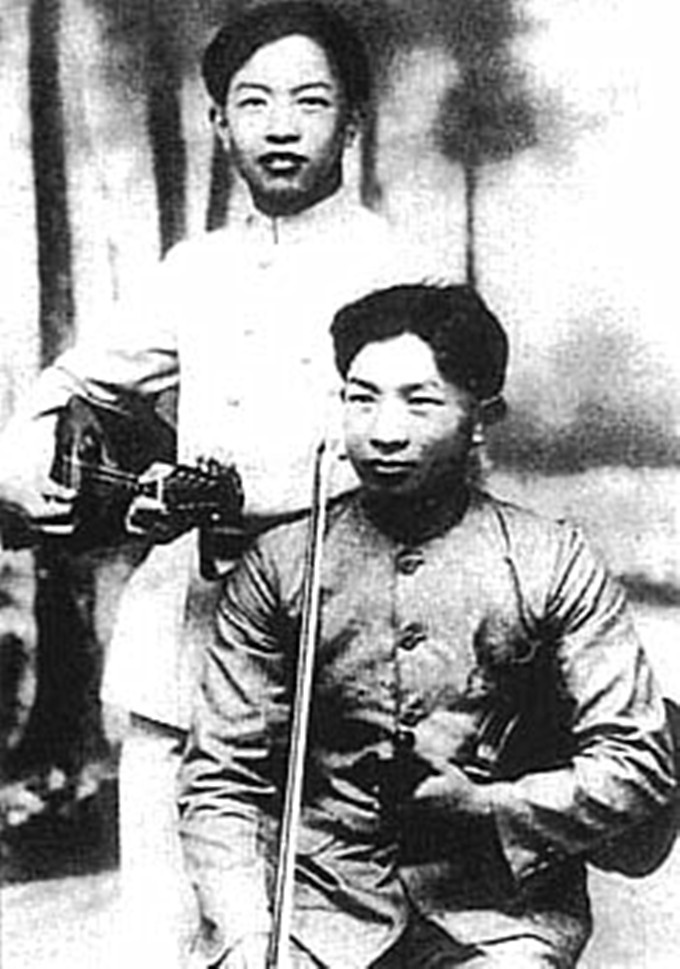 |
|||||||||||||||||||||||
| 聂耳和友人 | |||||||||||||||||||||||
 |
|||||||||||||||||||||||
| 由赵丹饰演的聂耳演奏激愤地演奏国际歌——电影《聂耳》中的一个镜头, | |||||||||||||||||||||||
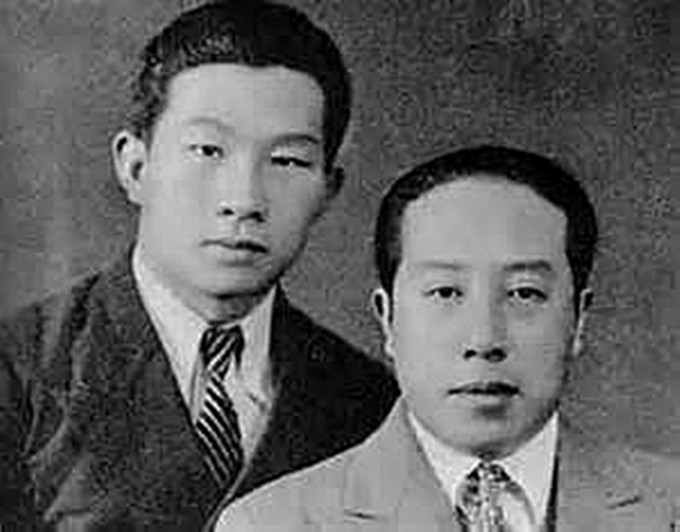 |
|||||||||||||||||||||||
| 聂耳与田汉 | |||||||||||||||||||||||
| 《义勇军进行曲》的诞生 | |||||||||||||||||||||||
|
田汉与聂耳都是中国共产党的优秀党员、当代文艺史上的重要人物,一位是著名的人民戏剧家,一位是著名的人民音乐家。 1932年,田汉遇到了他一生中极为重要的人物——20岁的聂耳。当时的田汉,已是有名的戏剧家、诗人和社会活动家。
|
|
||||||||||||||||||||||
|
Tian Han and Nie
Er were both outstanding members of the communist party of China and
important figures in the history of contemporary literature and art. In 1932, Tian Han met the most important person in his life -- Nie Er , 20.At that time, tian han was already a famous dramatist, poet and social activist. The march of the volunteers was first called the military song or march.In the late autumn and early winter of 1934, tian han completed the first draft of the story of the phoenix rising from the dead and submitted it to dentsu pictures.The theme lyrics of the script, which became the march of the volunteers, were written on the last page of the manuscript.According to xia's recollection, the manuscript had been sitting on the scriptwriter sun shiyi's desk for some time, and later she found that the back pages had been wet with tea at some point, and several words in the lyrics had become blurred.Xia yan and sun shiyi carefully identified, a little and copied out.After copying the lyrics, sun shiyi handed them over to nie er to compose music. Tian Han and other left-wing artists were arrested, young Nie Er filled with anger, volunteered to take on the task of composing for the film.Nie er in Shanghai xiafei road (now huaihai middle road) residence, just a few days to write the magnificent "military song" draft, and changed the song name "march".In addition, as a result of tian han's arrest, originally by him to write the song girl under the iron shoe lyrics, had to be replaced by the director xu xingzhi to complete.Fortunately, xu xingzhi was also a poet and had previously published a large number of patriotic poems. According to media reports, the first draft of Tian Han's lyrics is a free-form poem with different words and lengths. Nie er made three modifications to enhance the strength of the song during the composing process.The second is the tian hanyuan lyrics of the sixth sentence "facing the enemy's aircraft artillery forward" to remove the aircraft, and in the end of the sentence also added a rest;Three is in the original lyrics of the sixth line "forward!Forward!Forward!"And then added a "go in!" Around April 1, 1935, the white terror in Shanghai grew worse. Bad news followed.In order to protect the new forces, Nie Er decided to leave Shanghai and go east to Japan first, then to the Soviet union via Europe.Just one day before going abroad, nie er also went to the studio of dentsu film company, 405 jingzhou road, Shanghai, to audition with the first draft of the score and discuss the revision with shi huimin and others. On the morning of April 15, 1935, Nie Er set foot on a ship to Japan.In late April and early may, Nie Er sent the revised musical score back to Shanghai from Tokyo, Japan, to situ huimin and sun shiyi of dentsu pictures.In this way, a performance of the strong character of the Chinese nation, show the dignity of the motherland, heroic spirit of the war song was born.It was also the last work of nie er's short life and the last song he and tian han collaborated on. After the release of children of the storm, the theme song march of the volunteers soon became a powerful song of the war of resistance.It expresses the indomitable fighting spirit of the Chinese nation, inspires and inspires the confidence of the Chinese people in resisting foreign aggression, and possesses the high passion of The Times and the magnificent national spirit. According to the Shanghai national anthem exhibition hall staff, after the film "children in clouds" early shooting, the lyrics of the theme song did not determine the official song name, Nie Er from Japan sent back the score also wrote only three words "march".General Zhu qinglan, the investor of the film "children in clouds", added the three words "volunteers" to the front of the "march", and the title of the theme song became "volunteers march".Another way of saying it is that after receiving nie er's final draft, dentsu film company organized special personnel and after several deliberation, sun shiyi and others believed that the theme of the song, whether it was military song or march, was not very prominent and unsatisfactory.After deliberation, we decided to change the name of the song to march of the volunteers. In order to the theme song "march" better performance, the film director xu xingzhi asked the composer He Luting to help, a Russian composer living in Shanghai to find archaromov to write the orchestra accompaniment, this is the film by the trumpet and drum accompaniment of the theme song. On May 9, 1935, "march of the volunteers" was first recorded in the studio of Shanghai Oriental emi records company (now the small red building in xujiahui park).A week later, the recording was transcribed to the film children of the storm, and the entire film was finished in post-production. At the same time, the music of the march of the volunteers was published in the second issue of dentsu pictorial, a bi-monthly magazine published on May 10, 1935 and published on June 1, 1935. After the release of children of the storm, the theme song march of the volunteers soon became a powerful song of the war of resistance.It expresses the indomitable fighting spirit of the Chinese nation, inspires and inspires the confidence of the Chinese people in resisting foreign aggression, and possesses the high passion of The Times and the magnificent national spirit. However, neither Nie Er nor Tian Han heard the "march of the volunteers" for the first time.On July 17, 1935, Nie Er drowned at the age of 23 while swimming on the beach of oboboten in fujisawa city, kanagawa prefecture, Japan.In July 1935, Tian Han, who had come out of the nanjing military police headquarters prison, was very excited when he heard the march of the volunteers. But when he heard that Nie Er had been killed, he wept bitterly and wrote a poem of mourning, saying, "the first line of Jinling is more beautiful in May.Song altogether wait for heaven and earth, small don't what period lie between death and life!Country only now destruction of the great flood, the second worst border wall.The soul should change the wild sea back, good and my people complain injustice! |
|
||||||||||||||||||||||
 |
|||||||||||||||||||||||
| 聂耳出生地成春堂 | |||||||||||||||||||||||
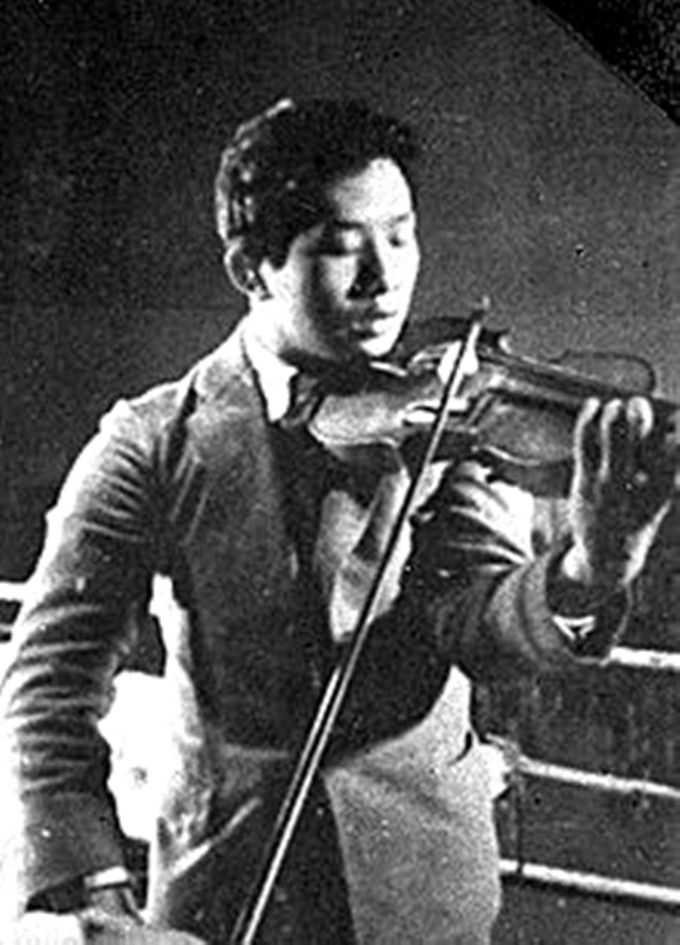 |
|||||||||||||||||||||||
| 聂耳 | |||||||||||||||||||||||
| 从1932年到1935年,聂耳创作了一系列作品,包括20多首主题曲,8部电影,3部戏剧,1部歌剧。聂总共创作了41首歌曲,其中很大一部分反映了工人阶级的生活和斗争。聂的巅峰之作是《义勇军进行曲》,这首歌最终成为了中华人民共和国的国歌。这首歌谣原本是电影《风雨中的儿女》的主题曲,讲述了20世纪30年代东北前线人民抗击日本侵略者的故事。聂耳的侄女聂利华说:“虽然我从未见过我叔叔,但我知道他对民间音乐表现出了浓厚的兴趣,因为我小时候经常喜欢一边听他的音乐一边看他的日记。受这些日记和音乐作品的影响,我加入了中国共产党,并对作曲工作产生了兴趣。”聂耳创作乐曲的热情,完全来自于他从基层人民那里获得的灵感。这就是为什么他的作品能够打动每一个中国人的心,”音乐制作人聂利华的儿子青山说。明年,庆将和北京的其他音乐家一起,计划举办一场盛大的活动来庆祝聂耳诞辰100周年。 | |||||||||||||||||||||||
|
Composer Nie Er,
who composed the March of the Volunteers in 1931. The song later became
the national anthem of the People s Republic of China. During 1932 to 1935 Nie Er created a series of works, including more than 20 theme songs, episodes for eight movies, three dramas, and one opera. Nie created 41 scores in total, and a significant proportion of these songs reflected working class life and struggles. The peak of Nie's work was his March of the Volunteers, which finally became the national anthem of People's Republic of China. The ballad was originally the theme song of the film, "Sons and Daughters in a Time of Storm", which tells the story of people at the front fighting Japanese invaders in northeast China in the 1930s. Nie Lihua, the niece of Nie Er, said, "Although I never saw my uncle, I knew that he showed his keen interest in folk music, because when I was young, I often liked to read my uncle's diaries, while listening to his music. Influenced by those diaries and music pieces, I joined the Communist Party of China and became interested in composition work." "The enthusiasm which Nie Er engaged in while creating music pieces is completely from his inspiration gained from the grass-level people. That is why his work can touch the heart of every Chinese person," Qing Shan, the son of Nie Lihua and a music producer, said. Qing, along with other musicians in Beijing, will plan a big event to celebrate the 100th anniversary of Nie Er next year. |
|||||||||||||||||||||||
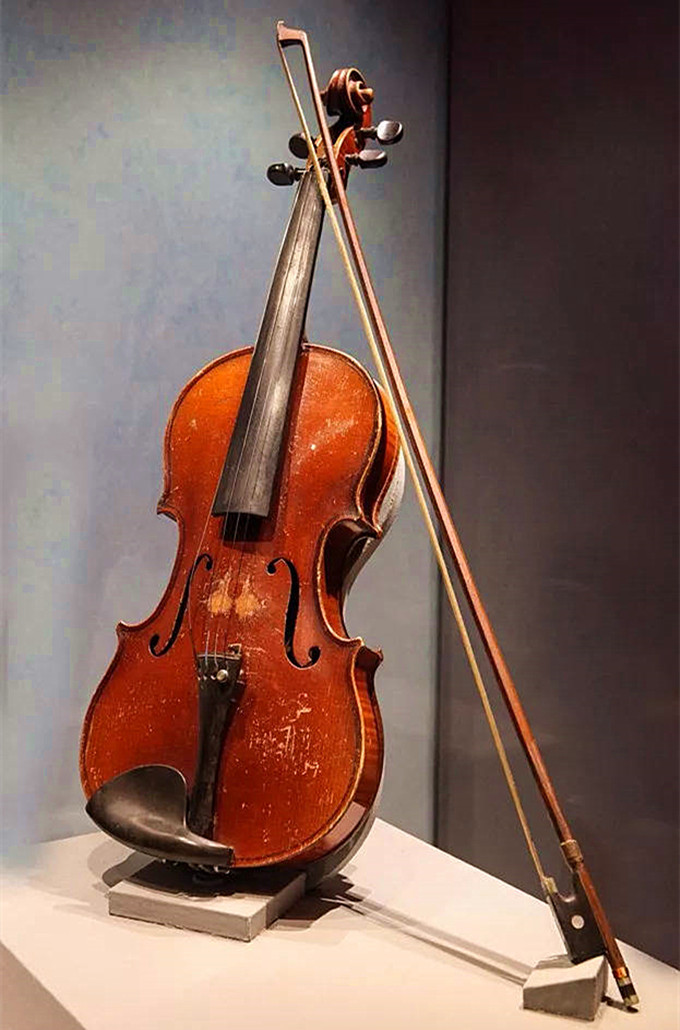 |
|||||||||||||||||||||||
| 聂耳用过的小提琴 | |||||||||||||||||||||||
|
|
|||||||||||||||||||||||
| 人民音乐出版社出版的金蛇狂舞的总谱 | |||||||||||||||||||||||
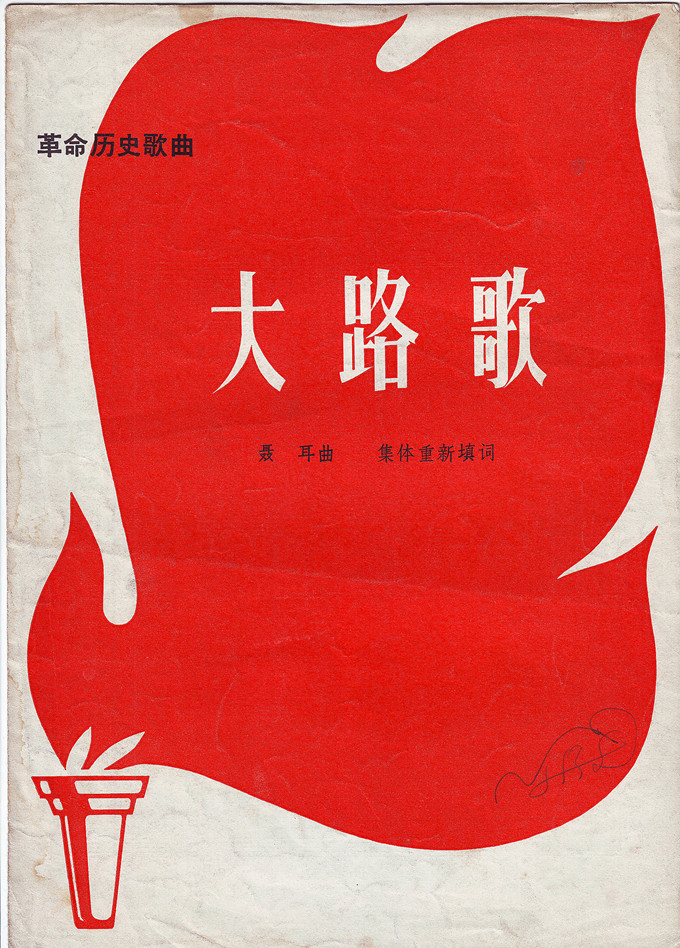 |
|||||||||||||||||||||||
40年前我收藏的聂耳的乐谱 |
|||||||||||||||||||||||
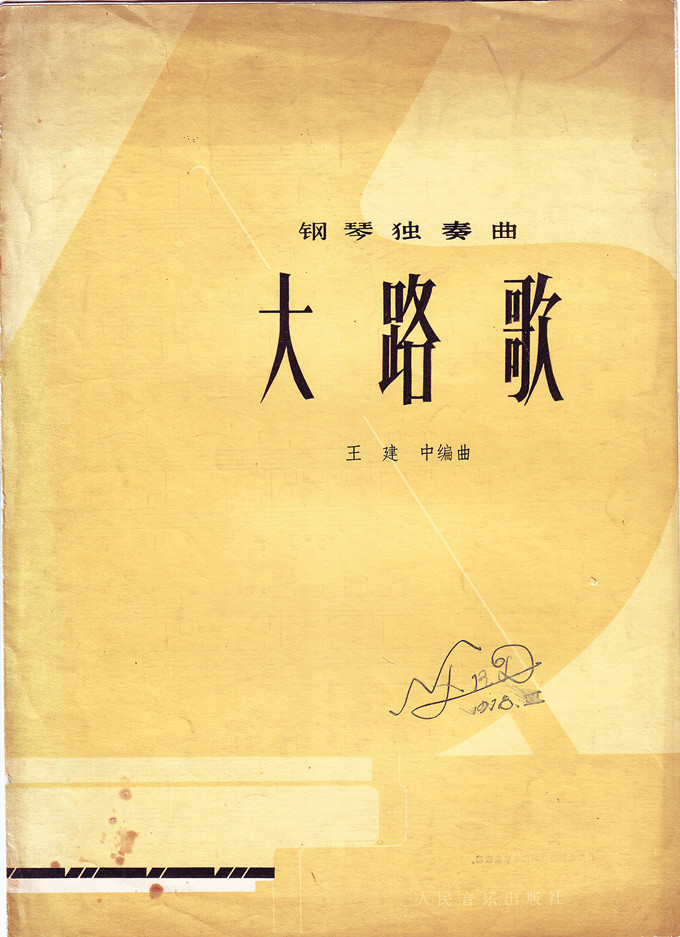 |
|||||||||||||||||||||||
| 40年前我收藏的聂耳的乐谱 | |||||||||||||||||||||||
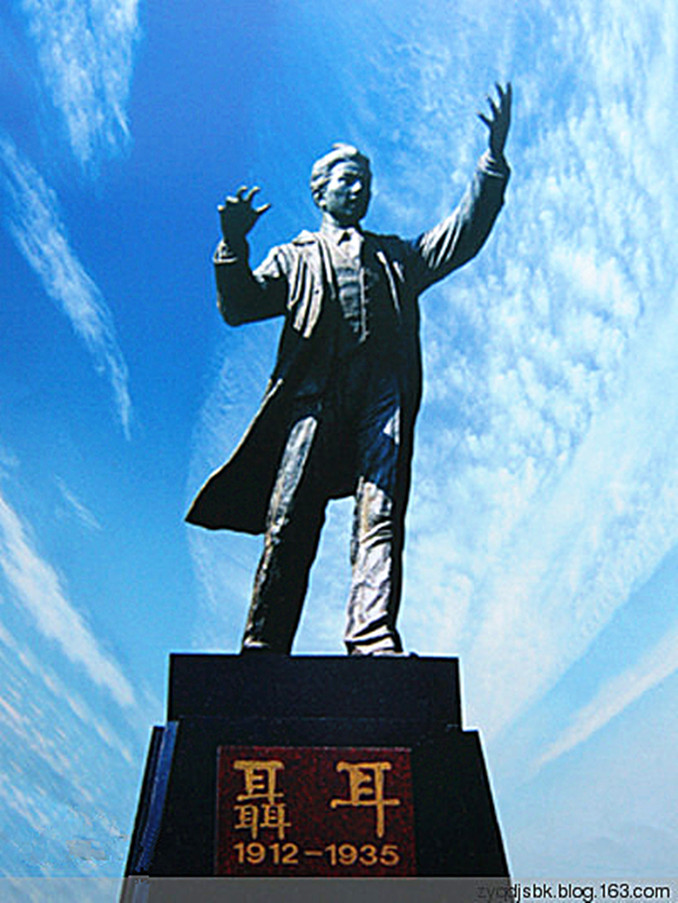 |
|||||||||||||||||||||||
|
1963年,随着中日民间的贸易往来,日本人民又重建“耳”字形的花岗石纪念碑,日本戏剧家秋田雨雀先生撰写介绍聂耳生平碑文,并请郭沫若题写纪念碑。郭沫若书题了“聂耳终焉之地”六个大字。
|
|||||||||||||||||||||||
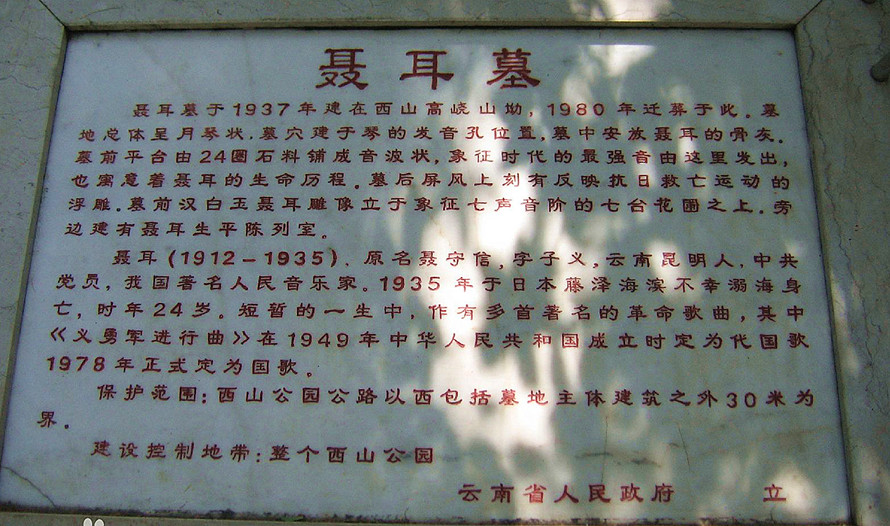 |
|||||||||||||||||||||||
| 聂耳的家乡云南省为聂耳立的墓碑碑文 | |||||||||||||||||||||||
|
|
|||||||||||||||||||||||
| 未得原作者编者授权严禁转载www.mt77.com任何内容 | |||||||||||||||||||||||
|
|
|
||||||
|
copyright © 2003-2005 xilu.com all rights reserved. |
||||||
|
|
||||||

